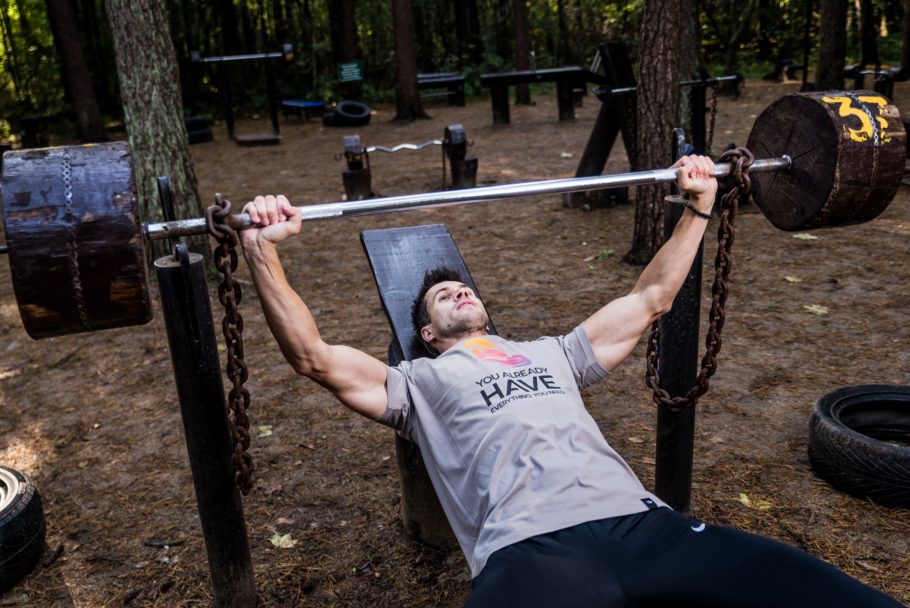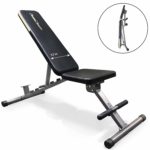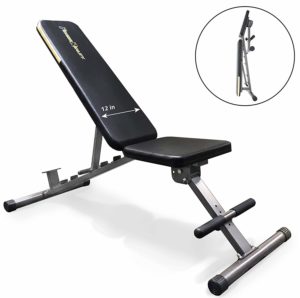The Pros And Cons Of A Decline Bench Press (2020)
The decline bench press is a great kind of exercise if you’re looking to work out your lower chest muscles. It’s really a variation of another popular chest workout: the flat bench press. The major difference between the two is that, when you’re doing a decline bench press, you are going to set the bench on a decline of between 15 and 30 degrees. This forces your body into a downward slope, which works the lower pectoral muscles when you’re doing the press. You can use the decline bench press as part of a more complete exercise routine targeting all of the muscles in the chest, giving you more defined pecs.
Overview Of Product
What are the Benefits?
The most important muscle to talk about here is the pectoralis major muscle, which is found in the upper chest area. It has the clavicular head, which is known as the upper pec, and the sternal head, which is the lower pec. The decline bench press works the lower pec.
Apart from the lower pec, the decline bench press also works other muscles in the body:
- It works the triceps brachii on the back of your upper arm
- It works the biceps brachii on the front of your upper arm
- It works the anterior deltoid on the front of your shoulder
When you’re in the pressing phase of the decline bench press, you will need to exert the lower pecs in order to push the arm upwards and extend it. This movement will be assisted by the anterior deltoid and the triceps. When you are bringing the weight down, in the downward phase, you will use the anterior deltoid and the lower pecs to flex the ar, and this movement will be helped by the biceps brachii.
When you compare the decline bench press fitness equipment to other types of bench presses, you can immediately see that it exerts a lot less stress on your shoulders and your back. The angle of decline transfers that stress that would normally be in your shoulders to your back, forcing you to work your pecs harder and define them in the process.
How do you do a Decline Bench Press?
You’re going to need a spotter
The first step of doing this exercise is to get yourself a spotter. When you are starting out, a spotter can help you to get into the position. They can also help you to move the weight up and down in a safe manner. Also, when you reach a point of failure, the spotter can step in and take the weights off your hands.
The distance between your hand’s matter
The first thing you should be mindful of is your grip. You don’t want it to be too wide because it can cause undue stress to your pecs and shoulders. That will put you at risk of injury. On the other hand, if you would like to do a bench press with a wide grip, then don’t lower the weight all the way down to your chest. Instead, stop a minimum of 3 inches above your chest so your shoulders can remain stable.
A narrow grip will exert a lot less stress on your shoulders. That said, it might not be the ideal form if you have problems with your wrist, elbow, or shoulder.
If you want to get the best grip for your body, try to get the advice of a professional fitness trainer.
Cons of the Decline Bench Press
There are some potential cons to consider when you’re doing a decline bench press. The greatest is the awkwardness you feel, especially if you’re trying this exercise for the first time. Remember that your head and torso will be placed along a downward slope and the rest of your body will be above them. This can feel quite awkward.
Gravity will also do its fair share of pulling the weight down toward you, making the press a little more challenging that other bench presses. The best advice I can give you if you’re new to bench presses is to first try flat and incline bench presses before you tackle this alternative.
Procedure
So, now that we understand a little more about this exercise, how do we do it? Here are some steps to get you started:
- Start by setting the bench to a declining angle of anywhere between 15 degrees and 30 degrees. The specific angle you go for will depend on your preferences.
- Have your feet placed securely at the end of the bench. Use the metal bars at the foot of the bench to secure your feet. Now lie down on the bench with your eyes directly under the barbell you will be lifting.
- Grip the barbell with your arms set apart a little wider than the width of your shoulders. Make sure your palms are facing forward.
- Lift the barbell from its rack by straightening your arms. Move the barbell over your shoulders and lock your elbows so your arms are straight.
- Take a deep breath and bring the barbell slowly down until it lightly taps on your mid-chest. Make sure to keep your elbows at a 45-degree angle from the side of your body. When the barbell is fully lowered, take a brief pause.
- Now breathe out and press the barbell back up to where you first held it at the start. Lock your elbows and take a brief pause.
- Repeat this 12 times and return the barbell to its rack.
- If you can, try to do this for a total of between 3 and 5 sets.
It is advisable that you start with lighter weights due to the unique angle of this bench press. As you get used to it, you can try heavier weights.
Fitness Reality 1000 Max Weight Bench
Out Top Recommended Decline Bench Press
About
- 800 lbs weight capacity with unique triangular support structure that gives this bench incredible strength.
- Smooth 12 position adjustable backrest by utilizing 2 position front leg adjustment.
- Backrest adjusts to -20 degree decline to +80 degree incline angles.
- Detachable 3 position adjustable leg hold down bar for additional stability during workouts.
Conclusion
The decline bench press is an excellent exercise for your lower pecs and will make for a great inclusion to a total chest workout. Don’t do it before you try other bench presses, such as the flat and incline bench presses, especially if you’re new to bench presses in general. You should also start with smaller weights to avoid injury.



